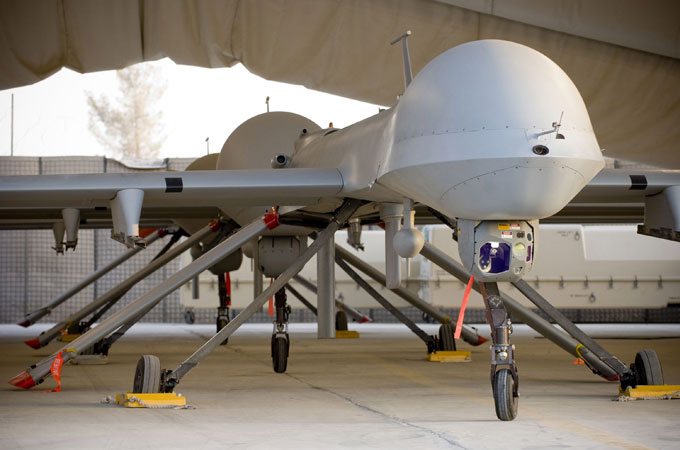A much-touted new camera system for US unmanned aircraft that is supposed to bolster surveillance efforts in Afghanistan has proved ineffective in tests, a US Air Force report concluded.
The surveillance system, dubbed Gorgon Stare after the mythical Greek creature whose terrifying gaze turned others to stone, has been described by enthusiastic Air Force officers as a groundbreaking program for robotic planes.
With an array of cameras mounted on a Reaper drone, the system is designed to capture images of an entire city while also tracking the movements of a particular car or individual in real time.
But Gorgon Stare performed poorly in an evaluation carried out by the 53rd Air Wing Air Combat Command, with the assessment recommending the system not be fielded until the problems are resolved, according to a leaked draft December 30 report.
The test found the system was “not operationally effective” and “not operationally suitable,” it said.
The quality of the video images was often poor or delayed, while footage from multiple cameras created gaps between pictures from each camera, the report said.
The system also had a serious technical problem that produced inaccurate coordinates for a particular location, raising the possibility of a strike on the wrong target.
The report said “an unpredictable software error generates a faulty coordinate grid” rendering location information “inaccurate and inconsistent.”
Winslow Wheeler, a defense analyst who often writes about wasteful Pentagon spending, first obtained the report and sent it to reporters.
“In sum, the complexity of the system impedes both the imagery and the ability of operators on the ground to receive it – let alone figure it out,” he wrote.
The US Air Force on Tuesday stood by the program, saying in a statement that it had a plan to resolve technical shortcomings raised in the test.
“The document leaked was a draft memo that was later revised in January. The January memo includes three issues that we have identified and have fixes in place,” it said.
The Air Force said the technical problems would be resolved and “did not believe they will affect the deployment schedule” for using the system in Afghanistan, but said commanders in the field would have the final word.
The chairman of the US Joint Chiefs of Staff, Admiral Mike Mullen, supported deploying the system to Afghanistan as soon as possible and that adjustments could be made as needed in the field, said his spokesman, Captain John Kirby.
“It’s not unusual for us to try to get new capabilities into the hands of warfighters before all the technical issues have been worked out. Indeed, it would be irresponsible not to in a time of war,” Kirby told AFP.
The Pentgon spent more than $400 million on the program in 2009-2010.










